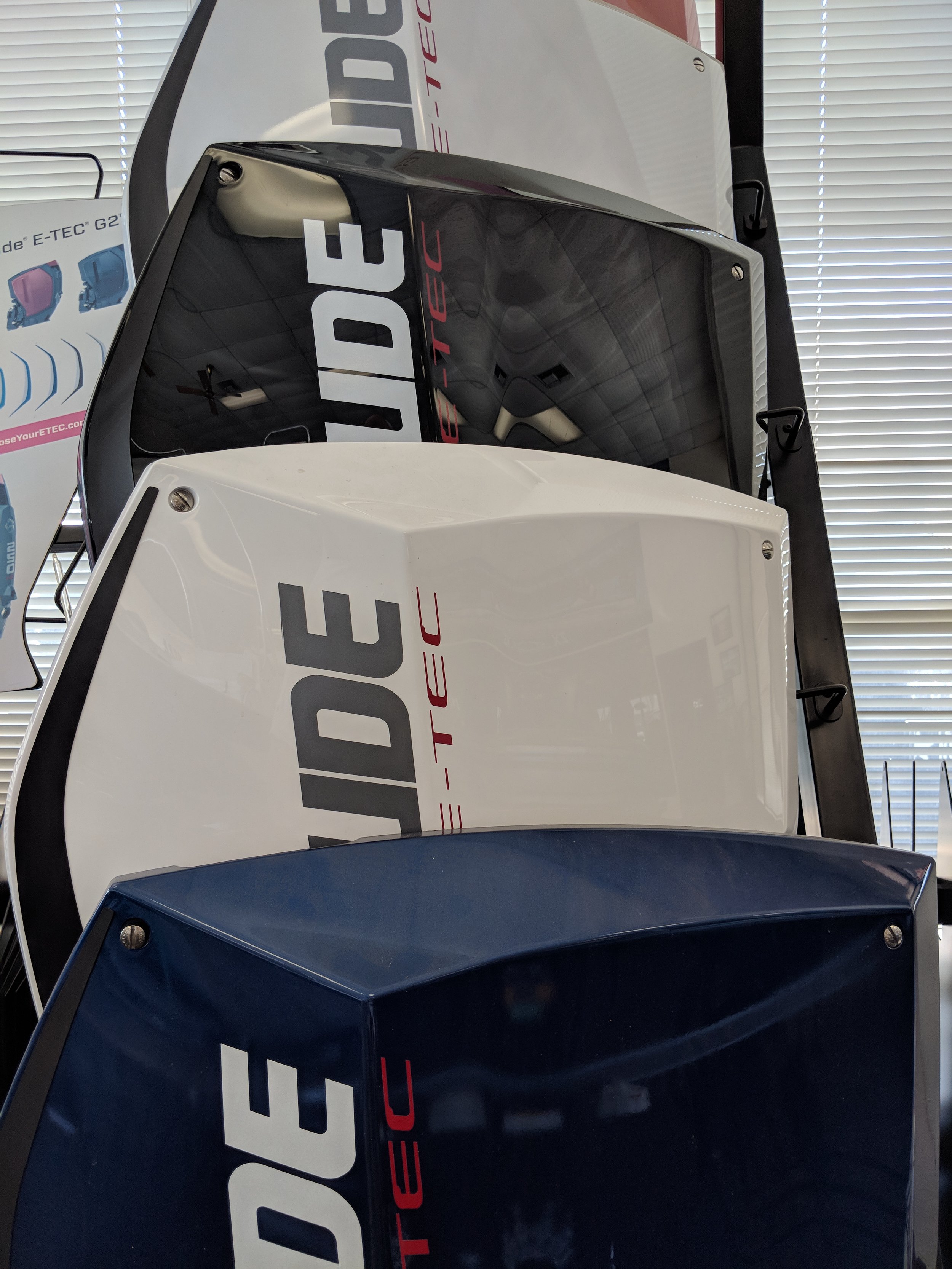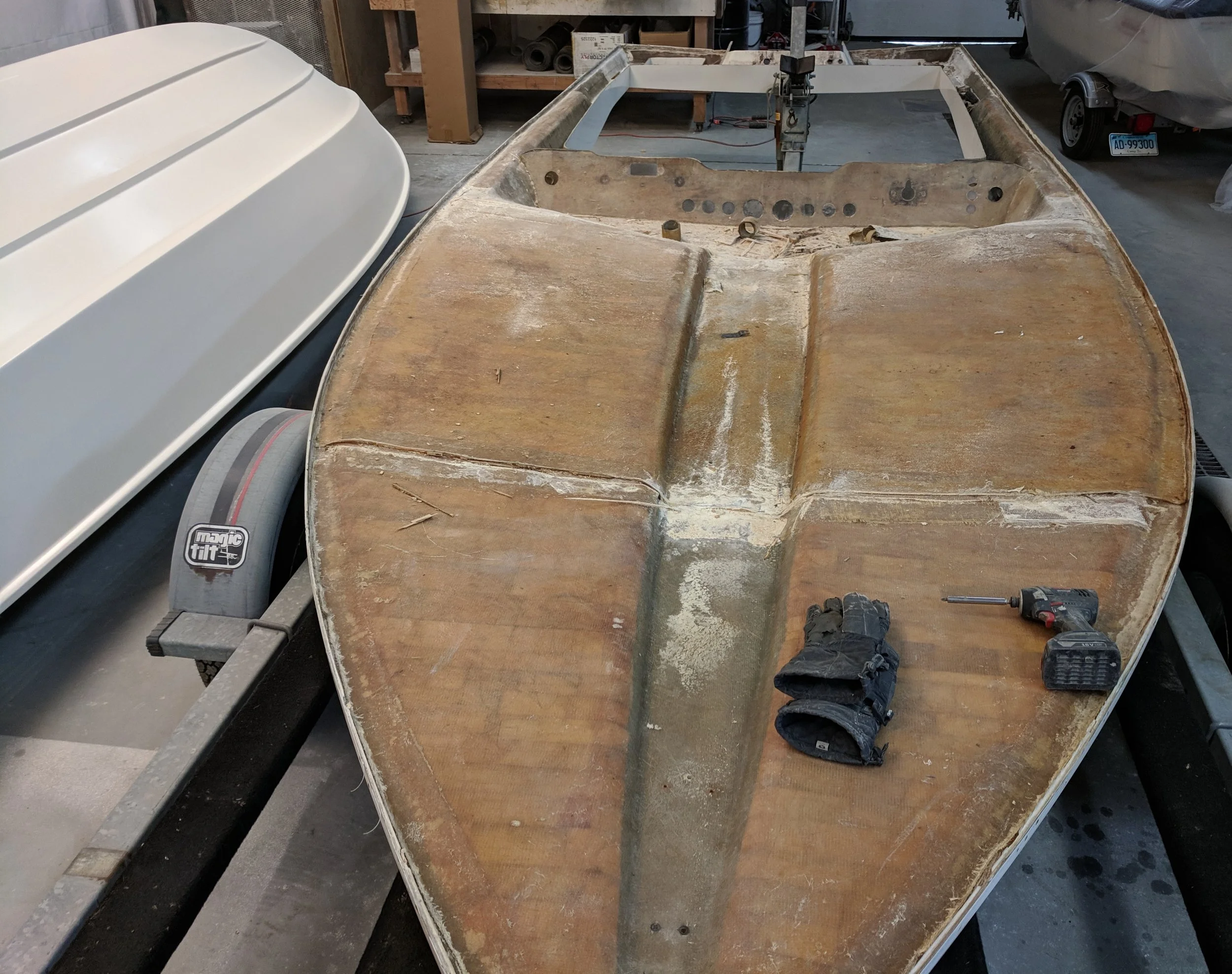Outboard Innovation: Ranking the Marine Engine Builders
Since we are now in 2019, let’s take a look at, and rank the most innovative outboard engine companies of the year, what they can do better, and look ahead at what we might see this year. The Miami International Boat show is in February, and is always the best launch event for outboard manufacturers.
1. Mercury Racing
This year, Mercury Racing stole the show with the “Racing” versions of the Mercury Marine 4.6L V8 platform. The 250R and 300R are really the only true performance outboards on the market, with solid mounts, and the high performance Sportmaster gearcase, along with other features. Those ingredients, make the Mercury Racing outboards the most compelling engines on the market in this power range.
And, speaking of power, most reports indicate the 250R and 300R are punching above their indicated numbers. One manufacturer I spoke with was testing the Mercury Racing 250R, and it was pulling top speeds just shy of the outgoing 300XS engines on the same boat. The 300R tests, so far indicate this engine is not only a torque monster, Mercury Racing says 40% more low RPM torque over the 300XS, and is getting way higher top speeds. Both the 250R and 300R rev to 6,400 RPM. Innovation is the relatively light weight, considering it is a V8, tuning like the transient spark calibration, Racing cams, and special intake manifold runners.
300R
The unique cowling on the new 4 strokes is drawing mixed reviews, but the performance isn’t, the 300R is a performer.
The 300R has two options for the gearcase, the Sportmaster and Torquemaster, both with 1.75 gears. Hopefully a taller gear option is coming. Additionally, the 300R can be suited with a HD bracket, featuring a single ram trim with a remote pump. The 250R only comes with the Sportmaster and represents great value for many. In fact, for most single engine boats under 22 feet, the 250R is perfect, and can save you some money. Other accessories for the 300R include integrated rear tie bar, with side steering mounts. For true performance credentials, Mercury Racing is the only game in town.
What can they do better? More engines. I know they are a small division of the parent company, but a 4 cyl 150R, and a V6 225R, would be extremely popular. I’m not sure Racing fully realizes the power of their brand and how they could fully profit from it. The Verado 400R is surely being replaced soon, so that will be exciting to see as well.
For many single engine applications, this represents a great value option. The 250R outperforms the outgoing 250XS, and is not far off the outgoing 300XS.
2. Evinrude
Evinrude really didn’t change much in 2018, but the fact is the ultra efficient two stroke 2.7L and 3.4L engines are still a bit ahead of the four strokes in a couple areas. One key feature that sets Evinrude apart is the integrated steering, which is a very slick design. The only negative feedback about the vertically integrated helix type steering shaft, that I hear, is the inherent sloppines from the soft rubber mounts, which negatively affects an otherwise great steering system. And, to be fair, this is a problem with everyone but Mercury Racing. I’ve said it before, manufacturers over account for noise, vibration and harshness (NVH), sacrificing steering precision, which is critical in performance boats. Plus, soft mounts wear out way faster.
The weight of the smaller 2.7L 150 to 200 HP range is another thing holding Evinrude back. But, the 3.4L is a beast, and really efficient. I love the ability to change the cowling, the steering, and the simplicity of a two stroke. The 2.7 and 3.4 share the SLX gearcase, only with different gears, 2.17:1 and 1.86:1 respectively.
G2
The unique side panels, integrated steering, and efficient two stroke design keep the G2 near top in innovation, with only a couple things holding it back.
What could push Evinrude to the next level? Optional taller gear ratios, and stiffer mounts on the HO models. Evinrude is an innovative company, and has plenty of engineering prowess, so I wouldn’t be surprised to see more from BRP Evinrude in the near future.
If only it had solid mounts, and the gears to go with that power. Imagine.
3. Mercury Marine
The much anticipated full platform change to four stroke in the entire upper range of outboards, from 175 to 300 HP, for Mercury Marine is pretty special. I actually think it’s great, and personally, I don’t really care if an engine is two stroke or four, as long as it’s reliable, powerful and reasonably light; Mercury has hit those marks for the most part. Would I like to see a performance version of the V6, absolutely. It seems comical having a 200 HP ProXS or 225 ProXS with the massive 4.6 V8 block, and makes the weight a concern for boats that would run a 200. Mercury has a variety of models based on the 3.4L V6, 175, 200 and 225, plus a 175 ProXS version. For the upper range, it is the 4.6L V8, 250 to 300HP regular and Verado versions, and the 200 to 300 HP ProXS. The 350 Verado is the only leftover engine. Why didn’t they come second in our ranking? Great engines, but not the most innovative; an almost 500 Lb V6 175 HP, and a massive V8 200 HP ProXS are examples of not pushing design and performance.
For new models, the 150 ProXS, based on the 3.0L 4 cyl, is really exciting, I think it’s a great repower outboard for old boats, and for light performance boats. One great thing about it is the price, low water pickup, and decent power; 163 HP at the prop. Sweet little engine. The 175 ProXS is also a great value, and good repower for those wanting a little more than the 150 ProXS.
Displacement
Big displacement is all the rage in outboards now. This V6 should be sent to Mercury Racing to do it justice.
What could be improved? Mercury Marine has done a good job of offering something for almost everyone. I do believe it was a mistake not making the 200 and 225 ProXS based on the V6 though. No doubt, the new engines were well done, well priced and have been a hit so far. Let’s see how they stand the test of time.
What a show Mercury Marine put on last year. Demand is huge apparently. Looks cool in white.
4. Yamaha
There is no question Yamaha has earned a great reputation for delivering a comprehensive lineup of outboards that dominate certain markets. The 4.2 V6 really pushed the envelope for four stroke engines, and has proven to be a great engine for aftermarket performance products, the big Yamaha can make great power. Although the stated weight is competitive, the engine itself is massive looking.
Yamaha has always used technology to improve their engines, the 4.2 utilizes sleeveless cylinders, and both the 4.2 and 2.8 have variable camshaft timing. You could say, Yamaha was first with the large displacement four stroke philosophy, and it worked for them, and now is being copied. This platform is almost ten years old now, and I am certain Yamaha will have something groundbreaking soon. The 150 to 200 smaller 4 cylinder range is a huge market for Yamaha, as is the 4.2. The SHO line is very popular, which is not much more than an ugly decal unfortunately. That said, the 175 SHO is a great little engine, and the 4.2 SHO are beasts, with some minor tweaks.
These things are so big, it can even fit in this wide angle shot from 50 feet away. The next Yamaha V6s should be interesting. Integrated steering? Less weight?
Yamaha’s new 5.6L V8 425 XTO is not that exciting to me, unless you have a massive CC, but I would bet we see a trickle down effect of the steering system and a few other features into the next generation V6 engines.
Ways to Improve? Keep innovating. Yamaha has a few known issues, like their marshmallow like motor mounts, and their hefty size. The next generation will probably address those things. Some innovations, like sleeveless cylinders. I would say moving the SHO up to 300 HP, as well as making the 2.8L more performance orientated would be nice too.
No Wake Zone: Suzuki
Imagine if they used their engine building skills to build light performance outboards. That would put Mercury Racing on notice, thankfully for Mercury Racing, they can sleep tight. Suzuki seems keen on making heavy, slug like outboards for fishing boats only. Actually, for re-powering on a CC or bay boat, these are great value, and reliable engines. For performance, no. But Suzuki has made great strides in the industry, so you never know what they might have in store.
People forget that among Suzuki, Honda and even Yamaha, Mercury is the smallest company by far. Yet in marine Mercury and Yamaha dominate them. Honda is 10 times the size (by market cap) of Brunswick, the parent company of Mercury Marine. BRP is the smallest of all of them, which shows that innovation is pivotal to success in this super competitive market.














